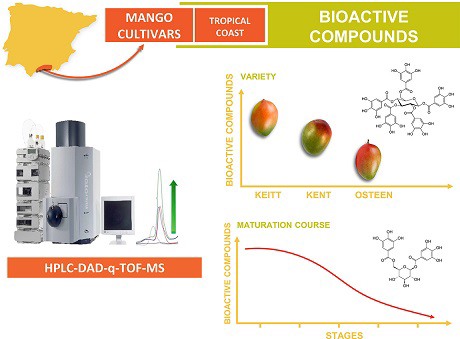Mango is an important natural source of bioactive compounds, especially derived from gallic acid. Factors such as variety and maturation stage can affect the bioactive compounds profile. Scientists at University of Granada (Spain) have evaluated the chemical composition of three Spanish mango varieties (Keitt, Kent and Osteen) at five ripening stages.

"The chemical analysis showed the presence of more than seventy compounds from different chemical families. Subsequently, PCA analysis highlighted that ripening process caused an important decrease on phenolic compounds which was being more accentuated in Keitt variety," the scientists explained. "On the other hand, Osteen was the poorest variety regarding phenolic compounds while mangoes from the Keitt variety contained major quantities of gallotannins and mono and di-galloyl species at the earliest maturation stages. Thus, from the functional point of view, unripe mangoes of the Keitt variety seem to be an excellent natural source of bioactive compounds".
Source: M. Elena Alañón, Rodrigo Oliver-Simancas, Ana M. Gómez-Caravaca, David Arráez-Román, Antonio Segura-Carretero, 'Evolution of bioactive compounds of three mango cultivars (Mangifera indica L.) at different maturation stages analyzed by HPLC-DAD-q-TOF-MS', 2019, Food Research International, Vol. 125.
